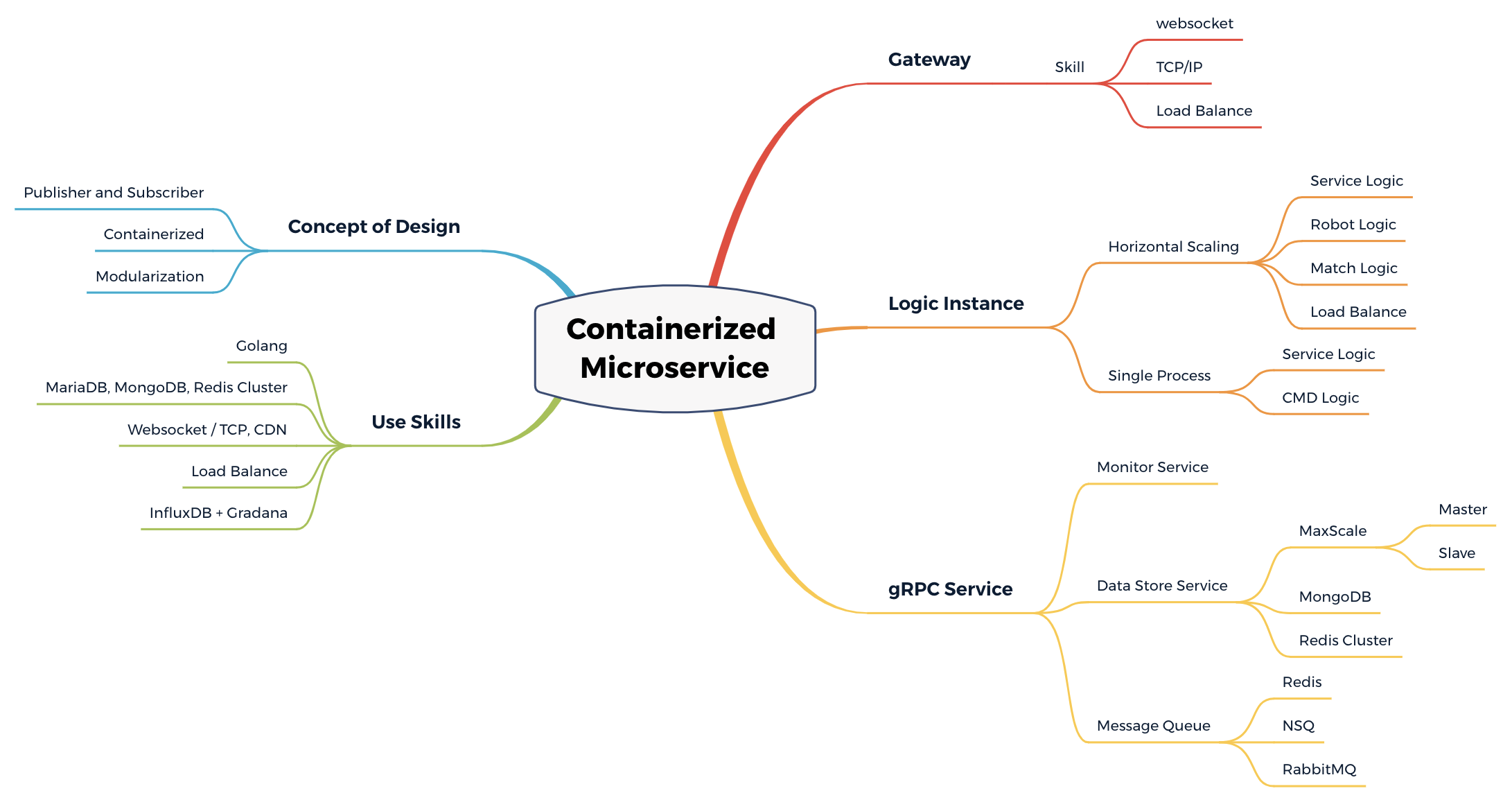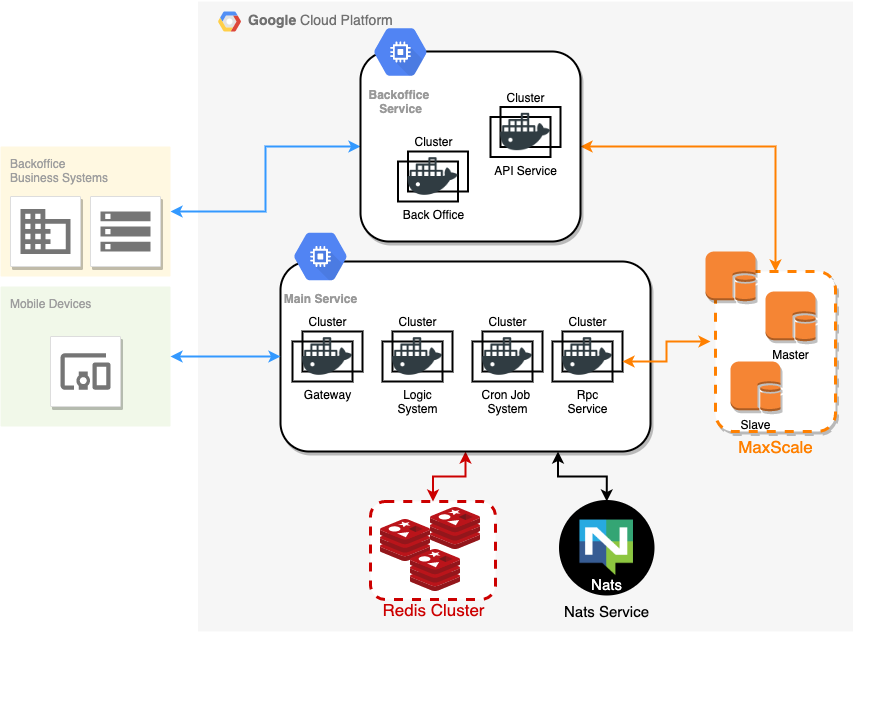Containerized Microservices
Introduction
Backend services often contain many different functions
in terms of development and maintenance,
and each function also has different permission requirements.
In this article will explain the currently designed framework
and introduce each function one by one.
And explain the database and server communication methods
Technical Map

Module Description
- Gateway
-
-
Connection with client, Assign to other modules for processing based on actions
Service can expansion according to the requirement
-
Connection with client, Assign to other modules for processing based on actions
- Logic Service
-
-
Responsible for processing logical actions
Auto Scaling when the service is up to threshold
To reduce single service usage
-
Responsible for processing logical actions
- RPC Service
-
- Responsible for processing Module and database transfer needs
Reduce the coupling degree to the database - Batch insert when data is huge to reduce the risk of concurrent events
- Receive service states for store and analysis
- Responsible for processing Module and database transfer needs
- CronJob Service
-
- Scheduled process of non-real-time of data needs
- Analysis and classification data for subsequent statistical inquiries
- API Service
-
- Open interface for clients to obtain data
Service Structure
Divided into api service、main service、database service
Service can auto scaling based on each demand
To realize load balance and Blue Green Deployment etc.

Database
- MariaDB
-
- MaxScale
- Replication
- Redis
-
- Cluster
- Pub/Sub
- RedLock
Protocol
- TCP/IP
-
- Single request from the client
- WebSocket
-
- long connection with client
- gRPC
-
- Service communication